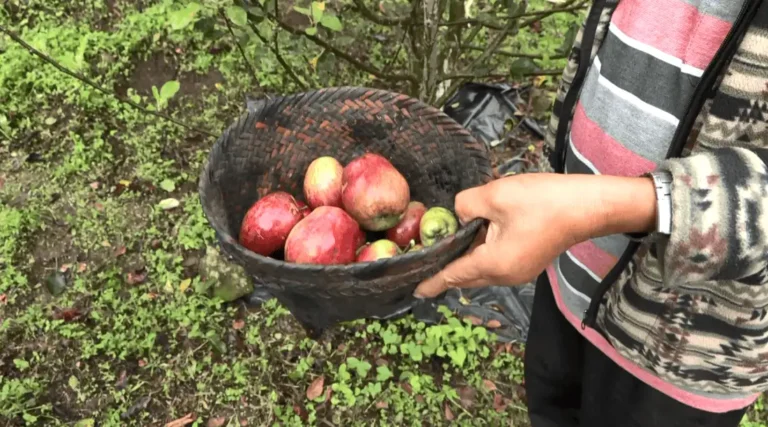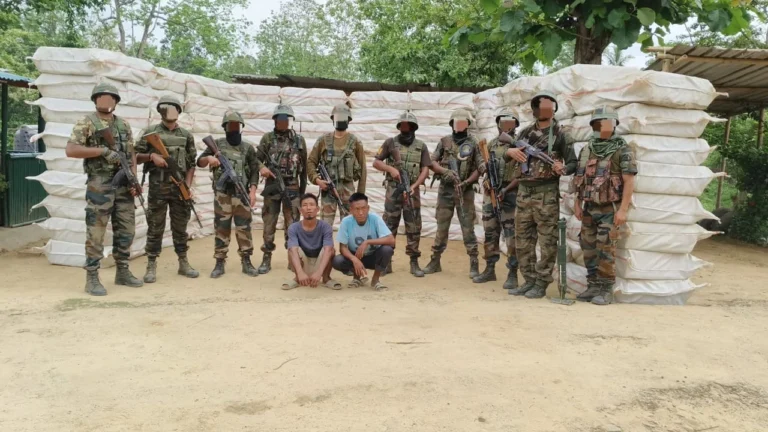Manipur People Give Up 196 Arms on Last Day of Surrender: A New Chapter in Peace and Security
News Summary
In a landmark move toward lasting peace, people in Manipur surrendered 196 arms on the final day of a government-led surrender drive. This decisive act marks a significant milestone in the region’s ongoing efforts to reduce violence and foster a secure environment. The surrender not only symbolizes the community’s willingness to embrace change but also underscores the success of coordinated initiatives aimed at disarming conflict and promoting sustainable peace.
Full Article
Introduction
Imagine reaching a crossroads where the past meets the future—a moment when difficult decisions pave the way for new beginnings. In Manipur, this moment arrived on the final day of an intensive surrender drive, as local citizens handed over 196 arms. It wasn’t just about giving up weapons; it was a powerful statement of intent, a heartfelt promise to leave behind a legacy of conflict and embrace a more peaceful, secure future. In this article, we’ll journey through the events leading up to the surrender, explore the significance of the act, and delve into its broader implications for the community and the region.
The Journey to Surrender
Over the past few months, the atmosphere in Manipur has been charged with anticipation and cautious optimism. The government, working closely with local security forces and community leaders, launched a comprehensive campaign aimed at encouraging the surrender of arms. This initiative was designed to not only reduce the number of illicit weapons circulating in the region but also to rebuild trust between the state and its people.
Picture a long, winding road where every step forward is hard-earned. For many in Manipur, the decision to surrender arms was not taken lightly. It involved confronting years of mistrust, enduring the scars of conflict, and finally choosing a path that leads to a more harmonious future. The surrender drive was both a logistical challenge and an emotional journey—a collective effort to disarm and demilitarize a society yearning for stability.
Understanding the Arms Surrender
At its core, the act of surrendering arms is a symbol of transformation. It represents a conscious decision to break away from cycles of violence and retaliation. In Manipur, the surrender of 196 arms is not just a statistic; it is a testament to the courage and resilience of a community determined to rewrite its story.
How do you explain to someone that a weapon, once a tool of power and fear, can be relinquished as a gesture of hope? It’s much like letting go of a heavy burden that has weighed you down for years. Every arm surrendered carries with it the promise of safety, the hope of reconciliation, and the commitment to a peaceful future. In a region where arms once symbolized survival and resistance, this act of giving up weapons is nothing short of revolutionary.
The Emotional Impact on the Community
For many residents, the surrender drive has been a bittersweet experience. On one hand, there is relief—a palpable sense of liberation from the constant threat of violence. On the other, there is a deep emotional struggle, as old wounds are forced to confront new realities. The surrender of arms, while a step toward a peaceful future, also brings with it memories of past conflicts and personal sacrifices.
Imagine the feeling of finally letting go of a heavy weight after years of carrying it. For many in Manipur, this is exactly what it feels like to see arms handed over to the authorities. The act is deeply symbolic, offering not just the promise of reduced conflict but also the opportunity for healing. In community meetings, in local gatherings, the mood is cautiously optimistic. People talk about the future with a mix of hope and apprehension, aware that while one battle may be ending, the journey toward lasting peace is only just beginning.
The Role of Government and Security Forces
The success of the surrender drive is a result of relentless efforts by the government and local security forces. From the initial announcement to the final day of the drive, every step was meticulously planned and executed. Law enforcement agencies, working tirelessly behind the scenes, ensured that the process was transparent, secure, and accessible to all.
Imagine a well-coordinated orchestra, where every instrument plays its part perfectly to create a symphony of order and harmony. That’s what the security forces in Manipur achieved. They set up numerous checkpoints, organized public awareness campaigns, and even provided incentives to encourage people to come forward and surrender their arms. This comprehensive approach not only made the process smoother but also reassured the public that their safety was paramount.
Furthermore, the collaboration between government officials, community leaders, and law enforcement has strengthened the bonds of trust. This unity is essential for any long-term strategy aimed at maintaining peace and security. The surrender drive is a clear indication that when the state and its people work together, even the most daunting challenges can be overcome.
Societal Transformation and the Road to Peace
The surrender of 196 arms in Manipur is a small but significant step toward transforming a society deeply scarred by conflict. It is a signal that the era of violent confrontations is giving way to a new chapter of dialogue and understanding. But what does this transformation really entail?
Think of a caterpillar transforming into a butterfly. The process is gradual and often painful, but the end result is a beautiful creature that symbolizes new life and hope. In Manipur, the surrender of arms is like that transformative process. It signifies the end of one phase of history and the beginning of another—one where the emphasis is on building a secure, inclusive, and prosperous society.
One of the key aspects of this transformation is the shift in mindset among the people. For years, many have clung to arms as a symbol of protection and defiance. Now, the decision to surrender these weapons represents a profound change—a willingness to embrace peace over conflict. This change is not just about disarming; it’s about reimagining what security means. It is about realizing that true strength comes from unity, dialogue, and mutual respect.
Challenges on the Path to Disarmament
While the surrender drive marks a significant victory, it also brings to light the challenges that lie ahead. Disarmament in a region as complex as Manipur is not a one-time event; it’s a continuous process that requires constant vigilance and commitment.
One of the major challenges is ensuring that the surrendered arms do not re-enter the black market. How can authorities be sure that these weapons won’t somehow be repurposed by those seeking to destabilize the peace? This is where robust monitoring and follow-up measures come into play. The government must establish stringent protocols to track and dispose of the surrendered arms safely, ensuring they never see the light of day again.
Another challenge is addressing the underlying issues that led to the proliferation of arms in the first place. Economic disparities, political grievances, and social fragmentation have all contributed to a climate where arms were once seen as necessary for survival. True disarmament, therefore, requires more than just confiscating weapons—it calls for a holistic approach that addresses these root causes. By investing in community development, creating job opportunities, and promoting inclusive governance, the state can help heal the divisions that fueled past conflicts.
Economic and Social Impacts
The surrender of arms has far-reaching implications that extend beyond immediate security concerns. Economically, the reduction of armed conflict creates a more stable environment for investment and development. Businesses can operate without the constant threat of violence, and communities can focus on growth and prosperity. This newfound stability is like a breath of fresh air—a chance for Manipur to rebuild and flourish.
Socially, the act of surrender is a powerful reminder that communities have the strength to change their destiny. It encourages dialogue, fosters a culture of transparency, and builds bridges between divided groups. When people see their neighbors making the brave decision to surrender arms, it inspires others to follow suit. This ripple effect can lead to a broader cultural shift where peace and cooperation become the norm rather than the exception.
Moreover, the surrender drive provides an opportunity for community reintegration programs. Many of those who once saw themselves as combatants now need support to transition back into civilian life. Through vocational training, educational programs, and counseling services, the government can help these individuals forge a new path—a path that leads away from violence and toward a fulfilling, productive life.
Building a Legacy of Trust and Cooperation
The surrender of 196 arms in Manipur is more than an isolated event; it’s the beginning of a legacy. It’s a legacy built on trust, cooperation, and the shared aspiration for a better tomorrow. How do you create a legacy? It starts with small, decisive actions that resonate through generations.
In Manipur, this legacy is already taking shape. The surrender drive has shown that when communities come together, transformative change is possible. It has set a precedent that can be replicated in other regions facing similar challenges. The hope is that this success will inspire further initiatives aimed at disarmament, conflict resolution, and community development across the country.
One of the most inspiring aspects of this legacy is the role of community engagement. Citizens have not been passive observers but active participants in the process of change. Their willingness to step forward, surrender arms, and embrace a peaceful future sends a powerful message to all: that peace is a choice, and it is one that we can all make together.
The Role of Media and Public Discourse
No significant societal change occurs in a vacuum. The media plays a crucial role in shaping public opinion and driving discourse. In the case of Manipur, responsible reporting has been instrumental in highlighting the importance of the surrender drive. Through news outlets, social media platforms, and community forums, the story of 196 surrendered arms has reached far and wide, sparking discussions about the future of peace and security in the region.
When the media reports on such transformative events, it does more than just inform—it inspires. Stories of courage, sacrifice, and hope resonate with people, encouraging them to believe that change is possible. Public discourse, fueled by these stories, helps keep the momentum alive. It holds the government accountable, ensures transparency, and fosters an environment where every citizen’s voice is heard.
International Perspectives and Broader Implications
While the surrender drive in Manipur is a local event, its implications are global. In an era where conflict and violence still plague many parts of the world, Manipur’s example offers valuable lessons in disarmament and peacebuilding. International organizations and foreign governments often look to such success stories as models for their own conflict resolution strategies.
Consider how a single act of bravery can spark a movement. The decision to surrender 196 arms is a reminder that even in the most troubled regions, peace can emerge when people choose cooperation over confrontation. It sends a message to global audiences that sustainable peace is attainable through dialogue, trust-building, and mutual commitment to a common goal.
Future Strategies: Ensuring Long-Term Peace
Looking ahead, the success of the surrender drive opens up new possibilities for long-term peace initiatives in Manipur. The government, in collaboration with local communities and international partners, is now exploring strategies to build on this success. These include:
- Enhanced Monitoring and Follow-Up:
Establishing robust systems to track and securely dispose of surrendered arms is critical. Continuous monitoring will ensure that the progress made is not undone and that the community remains protected. - Community Reintegration Programs:
Supporting those who have surrendered arms to reintegrate into society through education, job training, and counseling services will be vital. Empowering former combatants to become productive members of society is key to breaking the cycle of violence. - Investment in Social Infrastructure:
By investing in healthcare, education, and economic development, the government can address the root causes of conflict. A well-supported community is far less likely to revert to old patterns of violence. - Promoting Dialogue and Reconciliation:
Continuous dialogue between diverse community groups will help mend old wounds. Regular forums, peace talks, and cultural events can nurture a spirit of unity and shared purpose. - Leveraging Technology for Security:
Advanced technologies such as data analytics, surveillance, and secure communication networks will enhance the ability of security forces to prevent the re-emergence of illegal arms trafficking. Innovation in security measures is not just a tool—it’s a commitment to proactive peacekeeping.
Reflections: The Power of Collective Action
What makes the surrender of arms in Manipur truly remarkable is not just the number—196—but the spirit behind it. It is a shining example of what can be achieved when a community unites for a common cause. In every surrendered weapon lies a story of transformation, a narrative of letting go of the past to embrace a brighter future.
Much like a river that carves its path through a rugged landscape, the collective will of the people has the power to reshape society. The surrender drive is a testament to the fact that when individuals come together, they can overcome even the most daunting obstacles. It’s a powerful reminder that peace is not a distant dream—it is a reality that can be built, one courageous step at a time.
Conclusion: Embracing a New Dawn
The surrender of 196 arms on the last day of the drive in Manipur is more than an isolated event—it is a symbol of hope, transformation, and the promise of a peaceful future. This landmark moment marks the beginning of a new chapter in the region’s history, one where trust, cooperation, and community engagement pave the way for long-term security and development.
As we reflect on this significant event, it is clear that the journey toward lasting peace is ongoing. The path may be challenging, but the courage and determination of the people of Manipur serve as a beacon of inspiration for us all. With continued efforts, robust security measures, and a commitment to community development, the dream of a peaceful, prosperous Manipur is well within reach.
Let us celebrate this moment as a turning point—a new dawn that promises to transform not only Manipur but also serves as a model for regions around the world grappling with the challenges of disarmament and conflict. The legacy of this surrender drive will be remembered as the day when hope triumphed over fear, and the collective spirit of a community shone bright, lighting the way for a safer and more inclusive future.
Frequently Asked Questions (FAQs)
Q1: What was the significance of the 196 arms surrendered in Manipur?
A1: The surrender of 196 arms represents a crucial step in disarming the community and building a safer, more peaceful future. It highlights the willingness of local citizens to abandon violent means in favor of dialogue and reconciliation.
Q2: How did the surrender drive contribute to regional security in Manipur?
A2: By encouraging the surrender of illegal arms, the drive helped reduce the circulation of weapons, minimized the risk of violence, and fostered trust between the community and law enforcement agencies—paving the way for long-term security measures.
Q3: What measures are being taken to ensure the surrendered arms are permanently removed from circulation?
A3: Authorities have established strict protocols to securely dispose of the surrendered arms and are implementing robust monitoring systems to prevent any possibility of the weapons re-entering the black market.
Q4: How does the surrender drive affect the community and former combatants?
A4: The drive not only enhances public safety but also provides opportunities for former combatants to reintegrate into society through vocational training, counseling, and educational programs—ensuring they can build productive lives in a peaceful environment.
Q5: What future strategies are planned to maintain long-term peace in Manipur?
A5: Future strategies include enhanced monitoring, community reintegration programs, increased investment in social infrastructure, continuous dialogue for reconciliation, and leveraging technology for proactive security measures.




